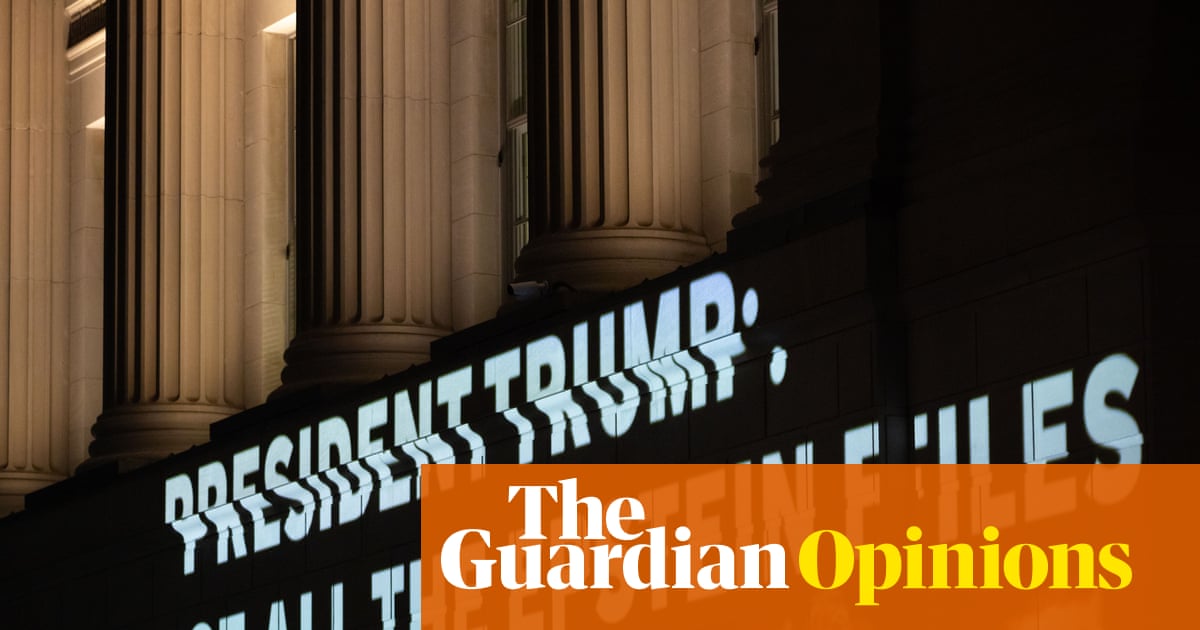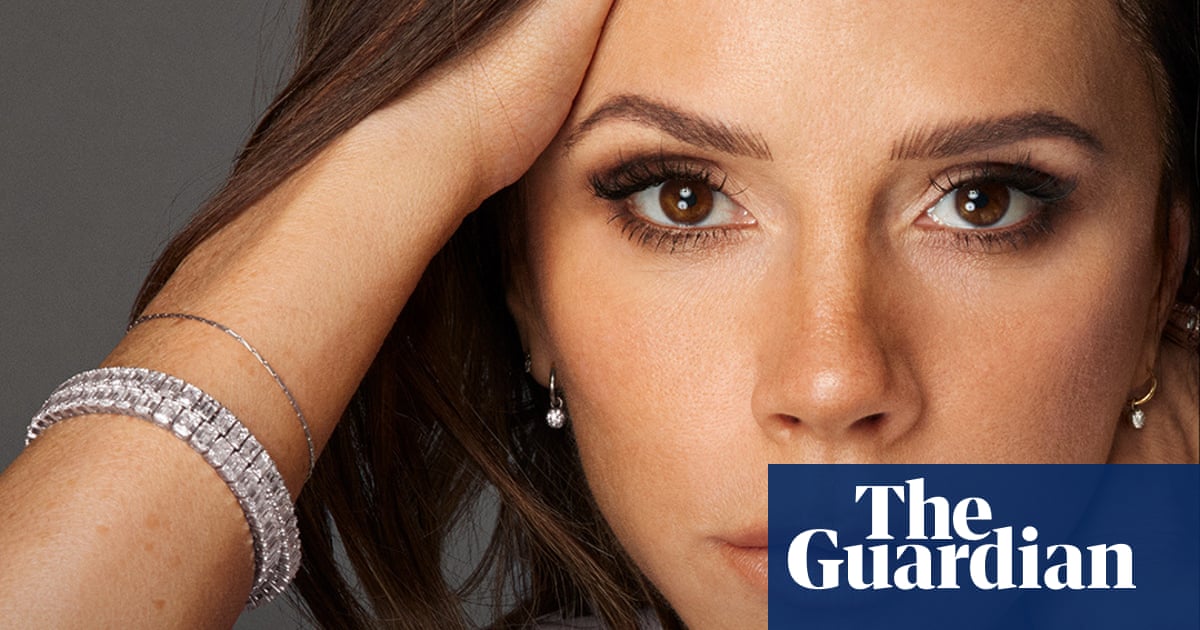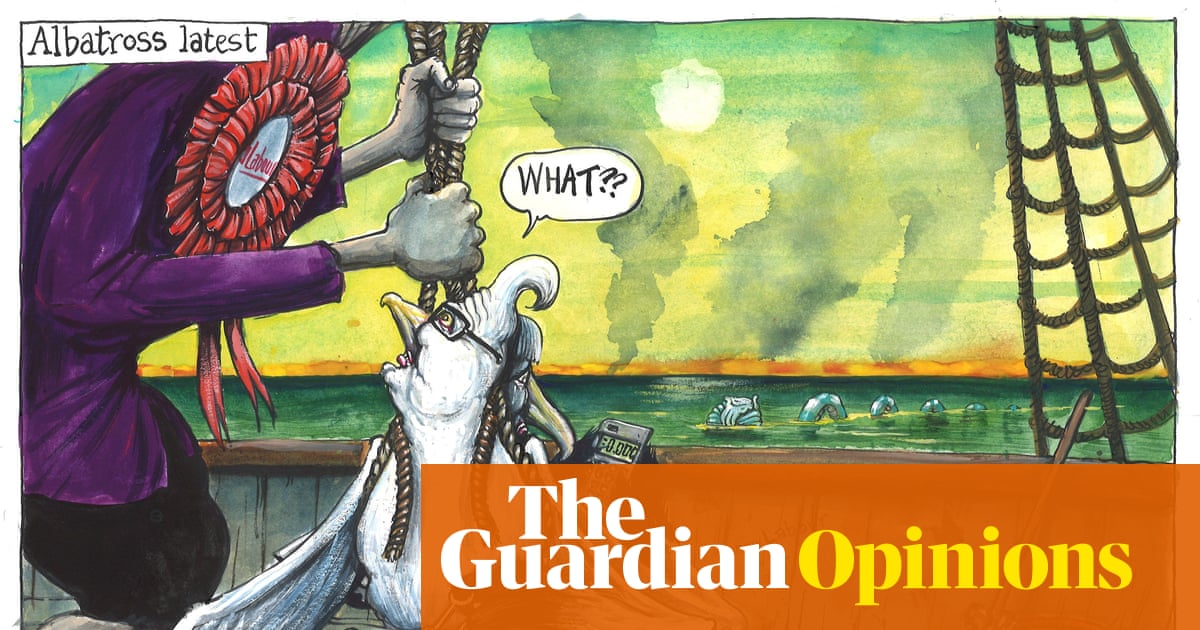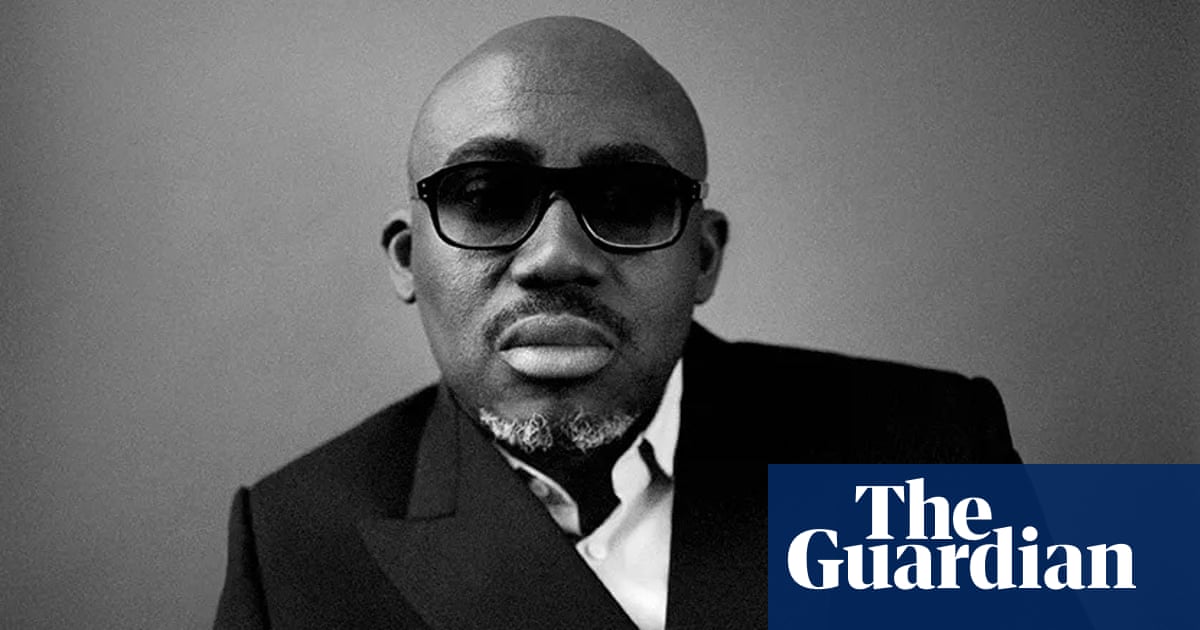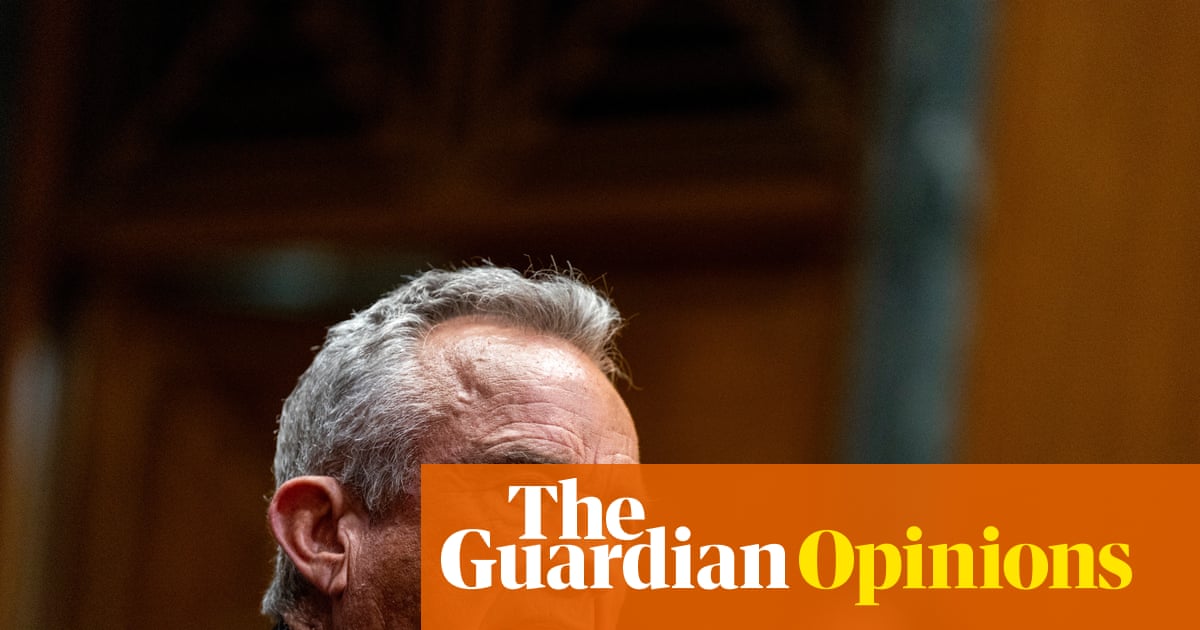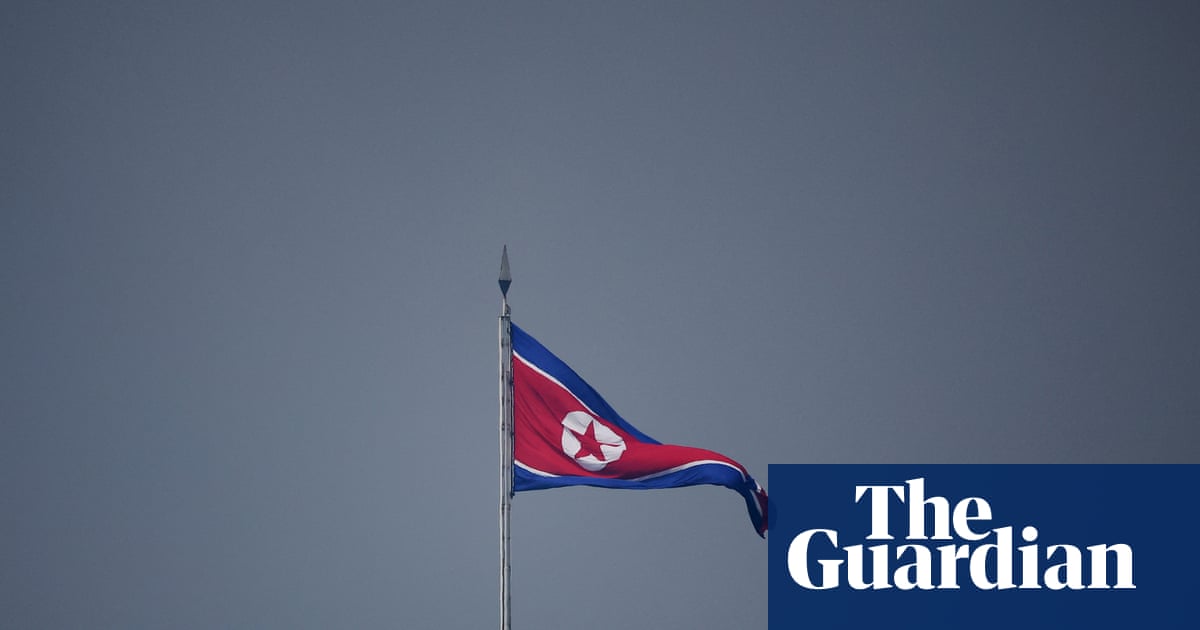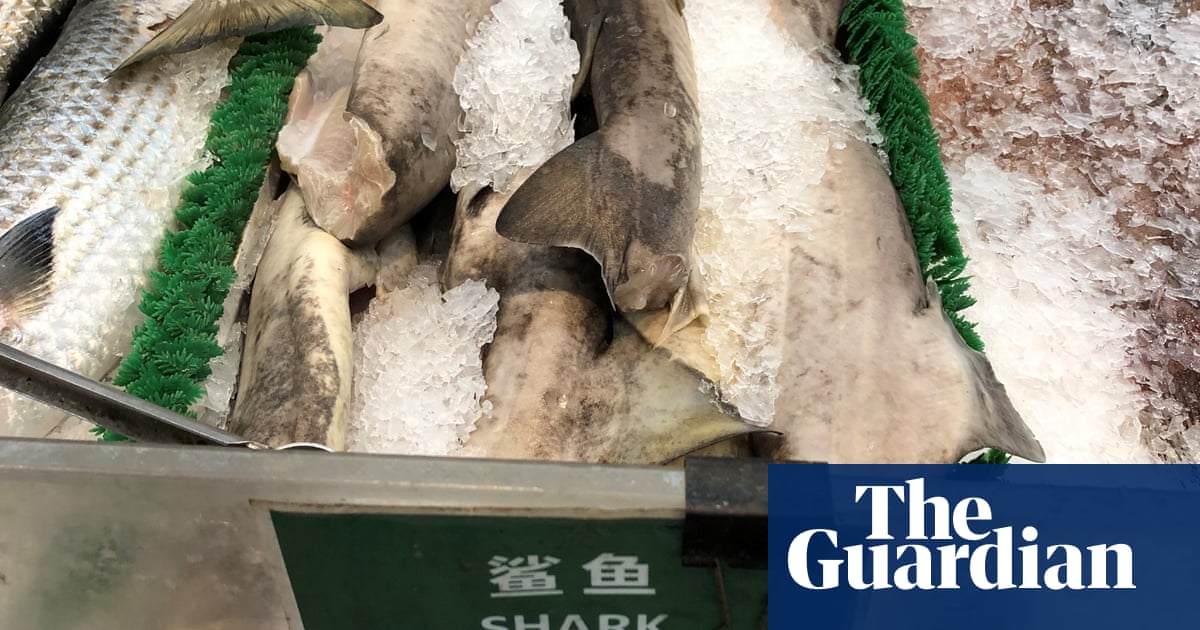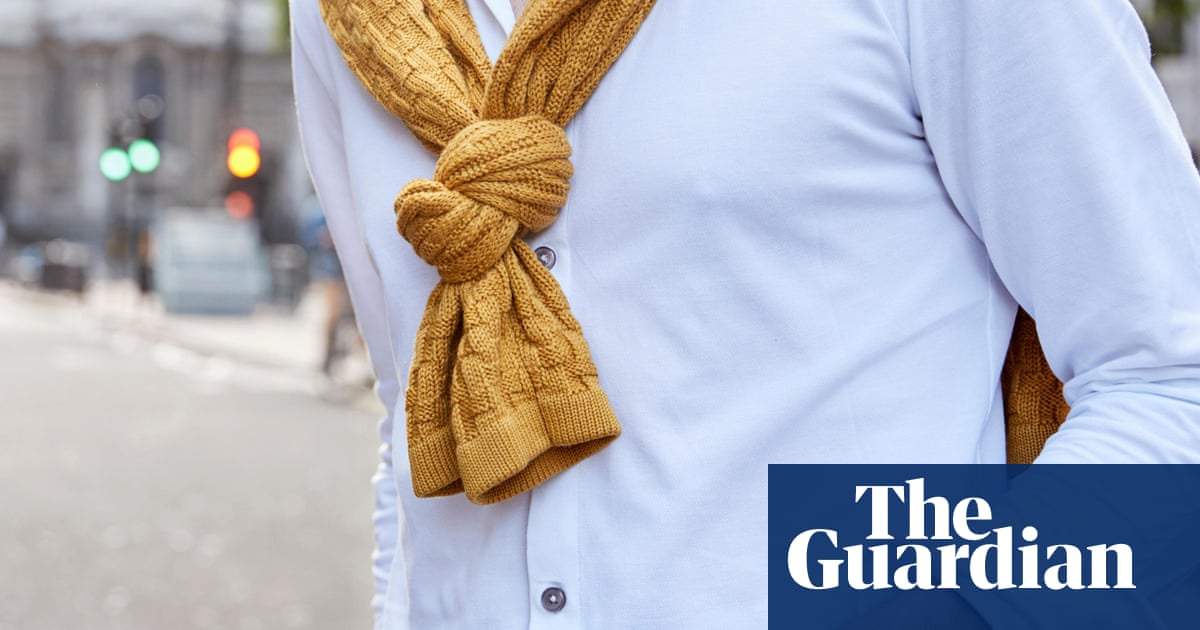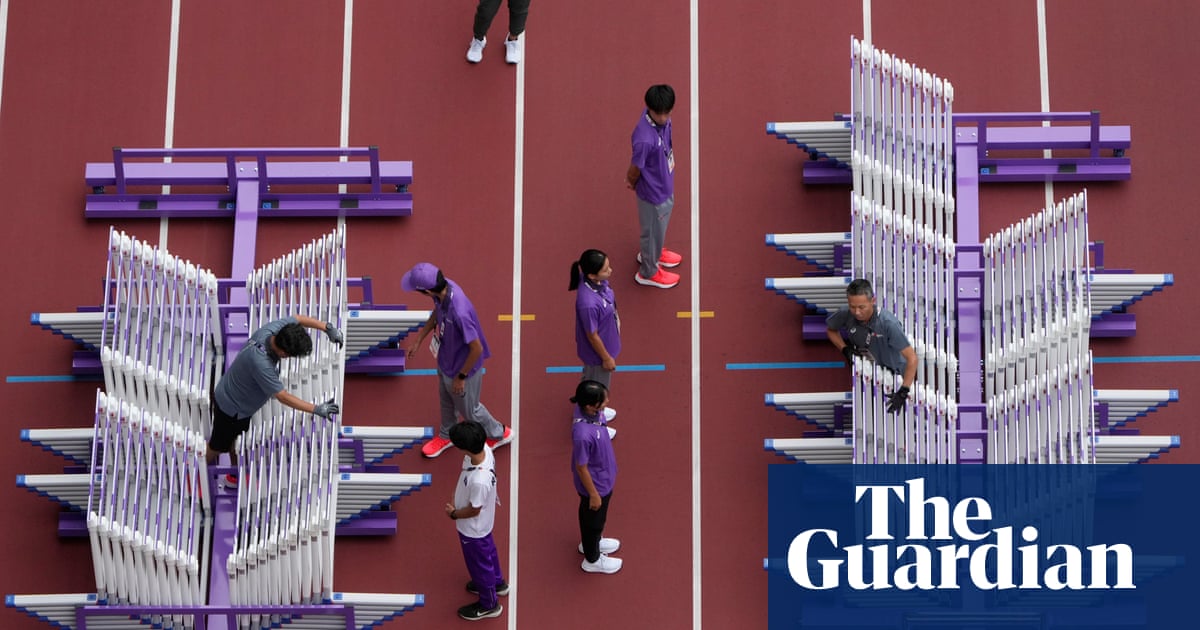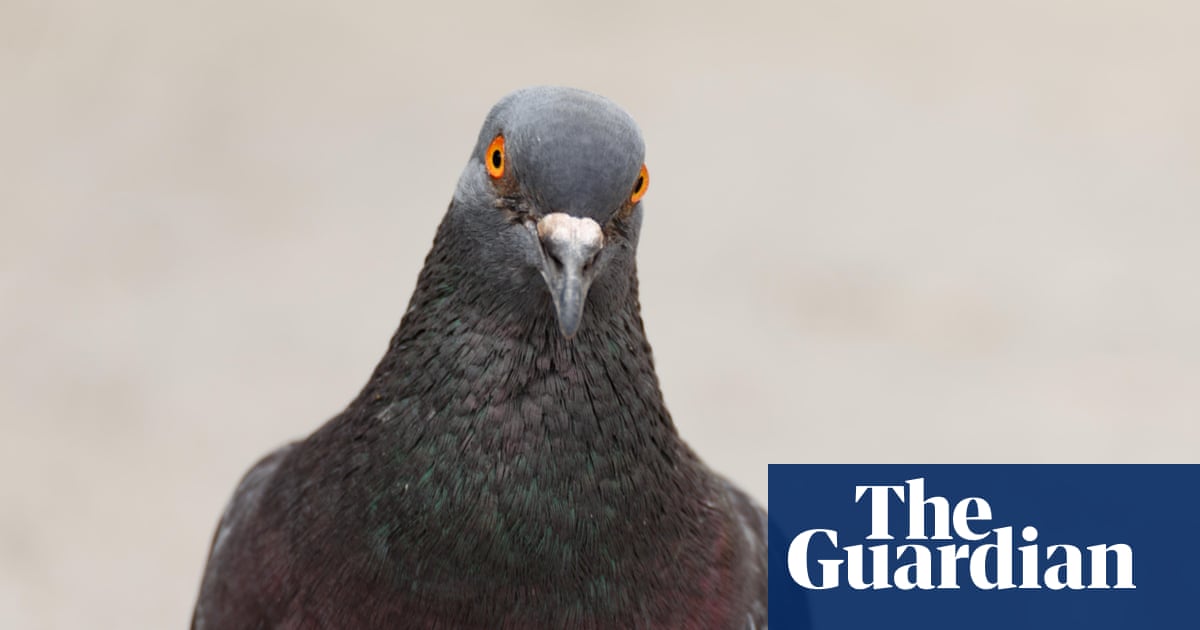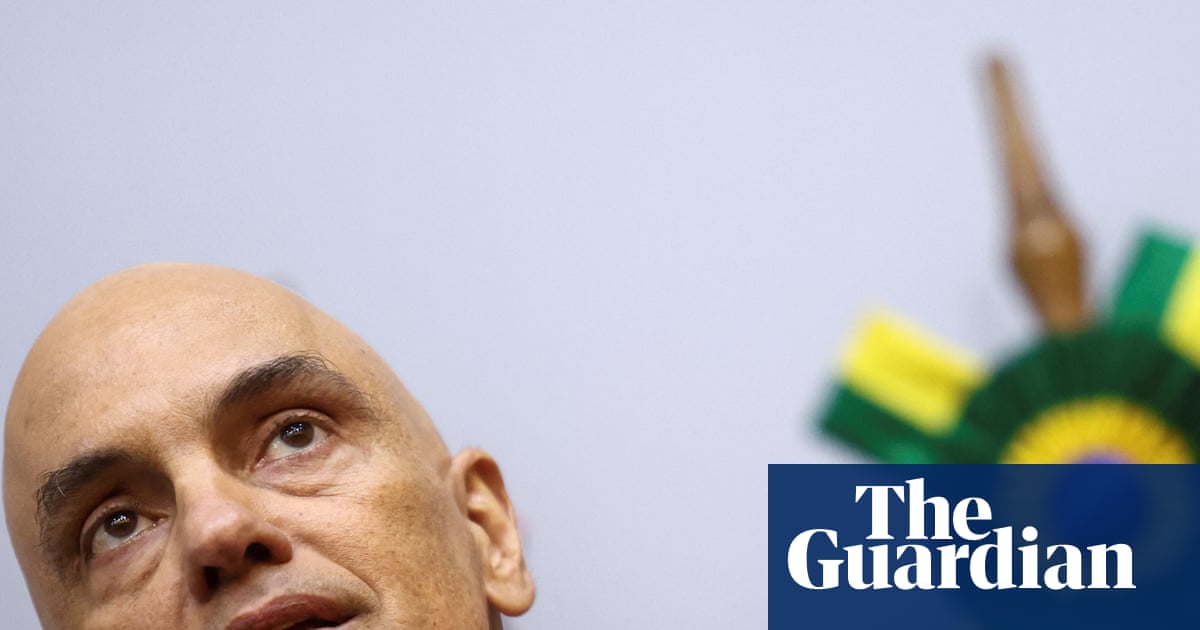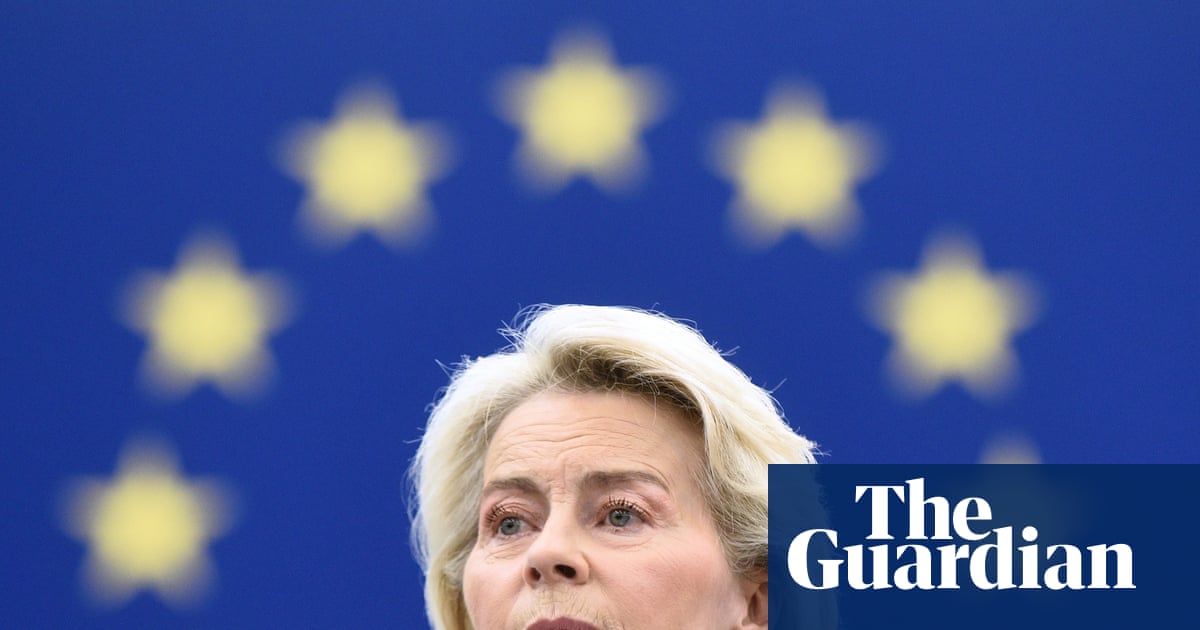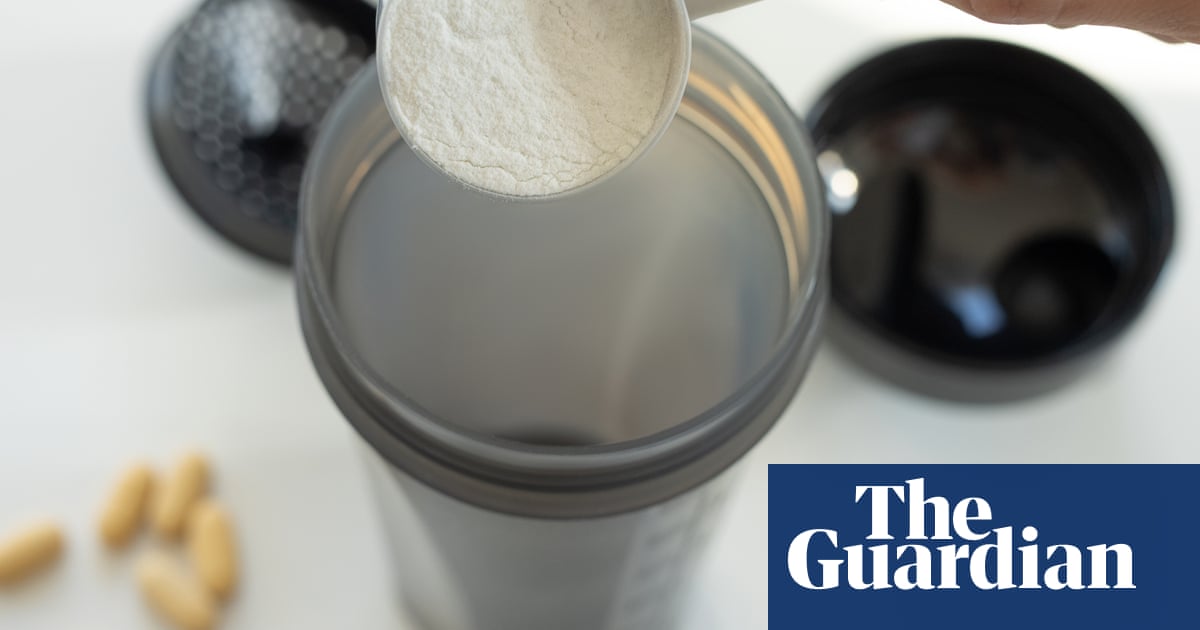In 2019, Sotheby’s sold a painting of a little girl with a conservative side parting, a Peter Pan collar and the most unflinching green eyes – which stare down the viewer. It went for $25m, which makes it Japan’s most expensive painting. And it is a knife crime waiting to happen. The girls gaze is as withering as those in Picasso’s Les Demoiselles d’Avignon. Her eyes follow you as inescapably as Lord Kitchener’s in the first world war recruitment poster. But Nara’s’s painting, Knife Behind Back (2000), is more upsetting than either of those. Most chilling is what we don’t see; it’s all about the power of titular suggestion.
This nameless girl is a variation on a theme that Nara has been developing in his paintings since art school in the 1990s. Inspired by both Japanese kawaii (cute) and Disney twee, his cherubic, cartoonish figures with oversized heads resemble psychotic Kewpie dolls. “People refer to them as portraits of girls or children,” says curator Mika Yoshitake. “But they’re really all, I think, self-portraits.” In an interview for the Hayward’s exhibition catalogue, Nara confirms this. “When I paint I always think the canvas is like a mirror.” Not just a mirror on society, but a mirror on the artist. These little girls with big heads and bug eyes are a sexagenarian male working out his demons.
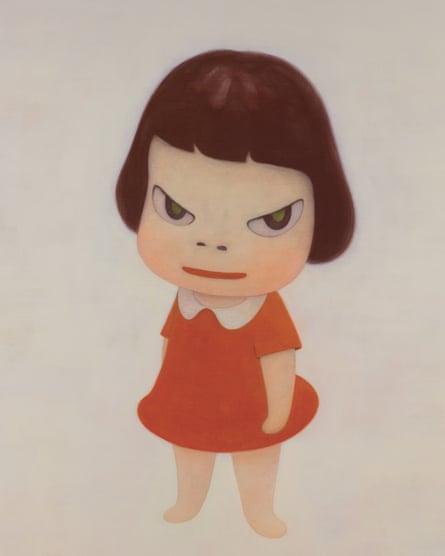
Nara’s characters – which can be seen at the Hayward Gallery’s bracing new retrospective, though sadly not the knife girl – have become as iconic as Warhol’s Marilyns or Lichtenstein’s blonde bombshells, and just as marketable as posters, T-shirts and coasters. But that was hardly Nara’s intention in painting them. “I kind of see the children among other, bigger, bad people all around them, who are holding bigger knives,” he says.
Japanese art isn’t supposed to be like this. Its purpose, for western viewers at least, is to charm and detach us from reality. A short walk from Nara’s current Hayward retrospective is the other Japanese summer blockbuster, Hiroshige: Artist of the Open Road. The British Museum exhibition includes the early 19th-century master’s bird paintings, heart-catching landscapes and decorous urban scenes from Japan’s Edo period. But the blurb for the show rightly suggests how the extremely popular artist tended to favour beauty over realism. And last year’s exhibition of Yoshida woodblock prints at the Dulwich Picture Gallery was criticised for air-brushing out Japan’s more violent history.
The point is not that so much Japanese art has a problem; rather that we westerners do. We yearn for art as garden of delights while the rest of the world is on fire. And galleries overwhelmingly give us what we wish for. We got it during, say, Somerset House’s spirited, merch-friendly kawaii exhibition or in Yayoi Kusama’s Infinity Rooms at Tate Modern. Only when I visited the Young Victoria and Albert Museum’s 2023 show Japan: Myths to Manga have I seen a recent exhibition that has set Japanese art in anything like a satisfying historical context.
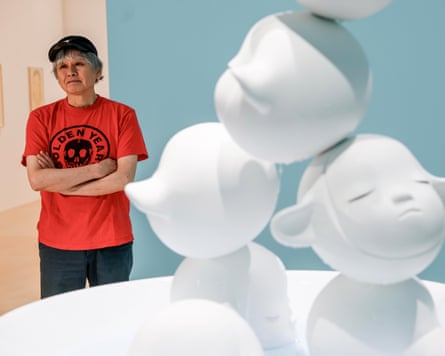
Nara’s art isn’t like this at all. It’s rough and ready, unafraid to be ugly, snarling with unsubtle anti-nuke agitprop graffiti, sometimes scrawled on old envelopes, and steeped in British and American rock’n’roll. On this last point, it’s worth noting Nara especially digs the Ramones. He once did an acrylic painting of a big-headed girl with a raised fist shouting into a mic entitled “Hey ho! Let’s go!” – a quotation from the Ramones’ Blitzkrieg Bop.
That love for rock’n’roll came early. As a lonely latchkey kid raised by working-class parents in Hirosaki, a remote town at the top of Honshu, Japan’s main island, Nara found solace by tuning into the Far East Network, an American station broadcasting to US service personnel at the nearby Misawa military base. He listened to western music on his self-made transistor but didn’t (at the time) understand the words.
Nara became obsessed with both the music and the cover art of the singles and albums he collected. He was enchanted by the wildflowers on the cover of Luke Gibson’s 1971 album Another Perfect Day. He loved John Hiatt’s Overcoats album cover depicting the singer songwriter standing waist deep in a lake. This image inspired Nara’s lovely 1995 painting In the Deepest Puddle II in which one of his big eyed poppets, this time with a bandaged head (a recurring motif), stands in a pool of water.
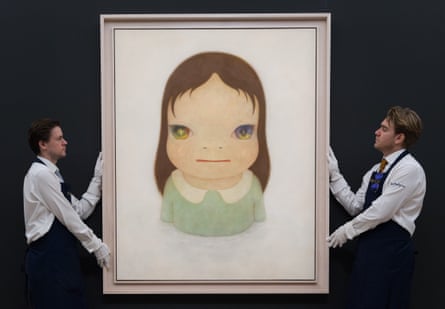
Throughout his childhood Nara drew and painted. “Painting,” he told one interviewer, “was my playmate.” It has remained so. He made his first artwork aged six. “I made an illustrated kamishibai story about my cat and me travelling together to the north pole, and then going all the way down to the South Pole,” he told the New York Times in 2020. “I was lonely and animals and music were a great comfort.”
Music was and remains both comfort and catalyst: throughout his career he has listened to music in the studio. He would hear a song – say the Clash’s Death or Glory or Del Amitri’s Nothing Ever Happens – and draw or make a painting, often very loosely inspired by it. He’s also made art for bands: The sleeve for REM’s 2001 single I’ll Take the Rain, for instance, includes Nara’s depiction of a crown-wearing dog on a homemade skateboard.
In 1988, after graduating from the Aichi University of the Arts, Nara decided to study at the Staatliche Kunstakademie in Düsseldorf. He remained in Germany for 12 years, where he concocted his most characteristic artistic moves: he would often paint a single figure in pastel with thick cartoonish lines. These figures seem innocuous but on closer inspection disclose that they are carrying weapons and wearing expressions like those of a toddler crossly awoken from a nap by an importunate adult.

Nara returned to Japan in 2000 to find many fellow artists subscribing to Takeshi Murakami’s Superflat postmodern art movement. Its followers drew on manga and anime and what Murakami called the “shallow emptiness of Japanese consumer culture”. While Nara was long associated and exhibited with these so-called SoFlo artists, his work was never as ironic. His art has never been celebration nor critique of the otaku sensibility that the Superflat movement critiqued. Otaku is the Japanese term used to describe geeky young people obsessed with manga, video games and computers and withdrawn from the real world.
It might seem that Nara’s moody staring girls depict just such otaku alienation, but that isn’t quite right. While his art expresses obliquely his own loneliness, there is nothing ironic or cleverly po-mo about it. Nara is too ardent, too political and too keen to express authentic emotion to be truly Superflat. “Punk rock,” he said once, “taught the 17-year-old me not to think with my top-heavy head, but to feel with my body”.
In 2011, his art was revolutionised by natural disaster: “What really changed the way I work was the tsunami that hit the north-eastern part of Japan in 2011.” The Great East Japan earthquake unleashed the tsunami that damaged reactors at the Fukushima nuclear plant and devastated large parts of his home prefecture. For several months he was so traumatised that he could scarcely work. When he returned to his studio, the first works he made were in clay that he worked in a seeming rage. It was as if he was physically attacking the lumps of clay he fashioned into sculptures of yet more innocent and/or troubled little girls.
While Nara has always opposed nuclear power (as paintings such as No Nukes, 2004, and After the Acid Rain, 2006, indicate), he became more politically vocal after 2011. He leant his imagery to anti-war and anti-nuclear banners. In an agitprop acrylic on board painting from 2019, a big-headed girl makes her reappearance beneath the slogan Stop the Bombs.
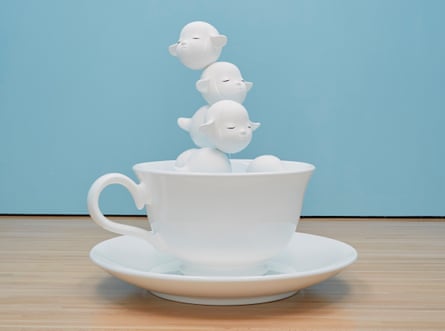
Nara is unapologetic about making such political art. “Now, even in this very moment, there is a bomb exploding somewhere in the world,” he writes on his website. “But there must also be new life coming into the world in that moment. ‘STOP THE BOMBS!’ I feel this from the bottom of my heart.” More recent works such as No War Girl and Peace Girl express a similarly pacifist message.
Arguably Nara has always been political in a broader sense. Way back in 1994, he made a shocking painting called Dead Flower. A little girl with blood falling from her lips and the words “Fuck You!” written in blood on her back, has just sawn through a flower with a dripping serrated blade.
I imagine that this little horror has just killed the last flower in the world just to keep the bare lightbulb at the top of the picture alight. If so, it’s an allegory of climate catastrophe. If not, it’s still terrifying. Either way, you’ll be able to see it in the Hayward’s show as a timely reminder that Japanese art doesn’t have to be detached from reality – nor simply beautiful.

 3 months ago
42
3 months ago
42
